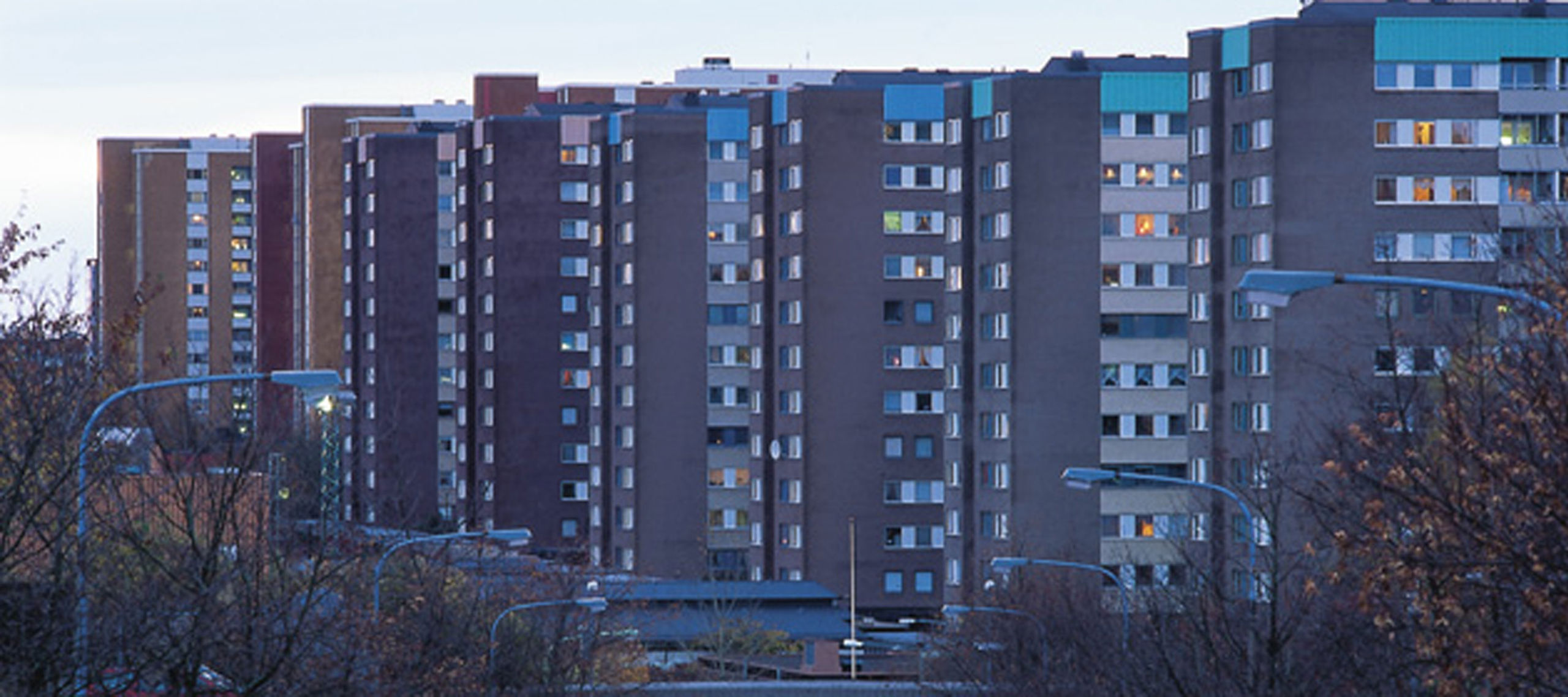deleted by creator
I love autism
Did you read that link before posting?
In comparison with other construction materials (aluminium, steel, even brick), concrete is one of the least energy-intensive building materials.[2]
Except it isn’t just about the energy intensity, but specifically the CO2 emission from the concrete process itself.
From the link’s sources:
The issue isn’t concrete or cement inherently but how much of is used. And it’s used because it’s either the most cost-effective material or just the only one able to deliver the required specs.
I thought the issue was sand/silica and the fact that we may exhaust the ressources to do cement eventually. It takes a lot of sand materials if I recall correctly ?
And not just any sand.
Must not know about asphalt yet…

I’m sorry, is this asphalt over baked paving stones? And if so, why?
Or is this a pothole filled up with stone? And if so, why?
It was the cheapest way to improve noisy cobble or other stone roads with fancy newer asphalt technology. Until it got patchy, then it gets expensive after all…
It is indeed paved over. I’m sure there are reasons, but probably not good ones given potholes like this. Aside from initial cost, for large vehicles+higher speeds. IMO seems a bit like gluing carpet over wooden floorboards (which is another anger-inducing thing, especially if you’ve lived in a house with a carpeted bathroom).
Not Just Bikes has a video on brick roads in the Netherlands (the bricks being called Klinkers, video called
Natural Handcrafted Artisanal ... Streets?!), how they allow easier maintenance/re-use, brick designs instead of painting the surface after, worn klinkers used in historic areas etc.We pave over brick in New Orleans too. Not sure why
Oh yeah, klinkers (if they’re baked clay) or the much less inspired sounding betonstraatstenen (concrete street stones) definitely have their benefits, but that video really skips over what a literally backbreaking job it is to pave a street like that, or how slippery these stones get when wet (less so for concrete or textured baked clay).
It’s mandatory to do anything over 2 hours of bricklaying by machine now, but that requires packaged stone. And packaging stone is even worse than relaying it from a pile, so you end up loading it into a truck, shipping it off for packaging and then moving it back.
You can design around that, most of the time, but we haven’t been doing that, so lots of handwork remains, which is not great for your health.
Of course, running asphalt over a street like this gets you the worst of both worlds, and its begging for potholes since the two materials match up really poorly. You do occasionally see it in the Netherlands on old roads on top of dikes that were “modernized” in the 70s and 80s.
(Edit: it’s actually more a synergy of shittyness, because you can’t really reuse most of the asphalt, because you don’t brickdust in it, and you can’t reuse the bricks because there’s asphalt on them)
Source: am dutch, took a year of civil engineering, ended up doing lots of safety and regulatory stuff for roadworks.
Since you have expertise in this maybe you can answer this question for me.
Do brick or stone roads last longer than asphalt or concrete roads?
It seems to me like they should, given the higher hardness of the material and the presumably greater resistance to freeze/thaw cycles. I have also seen a few brick roads near me that I can only imagine have gone a very long time with no maintaince (as I think the government here would rather cover it in asphalt than try to work with the bricks). The ground underneath the bricks has shifted over time forming depressions in the path that car tires take, but it is still fine to drive over at low speeds, as the slopes are smooth unlike the holes that form in asphalt.
I’ve tried googling this before but haven’t been able to find a straightforward answer as to how long a road like that can go between rounds of maintenance.
Do brick or stone roads last longer than asphalt or concrete roads?
That’s a solid “it depends”. And in this case, it depends on the definition of “lasting” and the definition of “road”.
Klinkers are near immortal, but they’re laid on what we call a “street layer” of 3cm of compacted, specifically graded sand, on top of some 25cm of less expensive sand. That sand can shift, compress and ruin the stability of the bricks. That usually happens due to heavyweight transport, or external factors (settlement of the soil underneath, tree roots, etc). If you run just passenger cars in a suburban area on steady ground, it could last 50 years. If you supply your stores on a road like that, it’s more like 10 years. But you can remove the brick, regrade/replace the sand and rebuild it from mostly the same bricks. Concrete bricks don’t last as long, and they break more when removed/packaged/relaid, I don’t really know the numbers.
Asphalt is different. Assuming we’re talking about a road that could also be made in bricks, asphalt has a surface layer of some 3-5cm, then between 10 and 20 cm of underlayers in layers of around 5 or 6cm. Then some 20-30cm of gravel, and up to half a meter of sand. That top layer lasts something like 10 to 15 years, and it suffers most from frost/thaw, UV light, etc. You don’t have to replace al of it at once though, you can patch it.
The underlayers generally fail due to traffic weight, but that can be 2, 3 or maybe even 4 cycles of surface layer replacement later. Generally, for busier (non high-way) roads, they replace the surface layer twice and the third time they do parts of the underlayers, or all of it, depending on damage. Asphalt can be 80 or 90% recycled though, but it takes quite a bit of heat (something like 3 to 6 cubic meters of gas for each ton of asphalt).
So, all in all, not all brick roads are equal, not all asphalt is equal. And “how it lasts” is a complex question too. It’s also a tough comparison, because we generally don’t build roads for the same purposes. If it’s very busy, we usually don’t use bricks.
Thanks
Our driveway is made from the same kind of thing, rain never pools on it as it goes down the gaps
It’s a lovely street made of brick pavers that has been paved over with asphalt because it provides a smoother ride for vehicles and pleasant aesthetics are for losers.
I’m sorry, is this asphalt over baked paving stones? And if so, why?
This is what happened in a lot of European cities, they just paved over the cobblestone. I’ve seen something similar in a especially deep pothole in my neighborhood. Felt like a glimpse into the past.
Don’t know why, but I totally get this. Like, 100%, I just have it as a general feeling of disgust that I can ignore.
I hate bricks.
I went to the London suburbs and still think it was the ugliest building style ever. Bricks everywhere, bricks on walls separating houses, brick train stations, brick city buildings, brick houses… Bricks bridge ?
I just can’t stand those brick based cities. I think it’s just as bad or worse as going full on concrete.
But, do you mean like red clay bricks?
I mean specifically cement blocks like in the picture. I’m totally down with red clay bricks.
I just find full brick based architecture absolutely horrible.
So if everything is red bricks I think it’s ugly. And in London suburbs j felt like everything was made of bricks. I remember taking a suburb train and being shocked that almost every single building had those red bricks.
To each their own I guess but full brick style is not my thing for sure.
I understand the distaste for the aesthetics. But it’s a pretty inarguably better material from a structural, cost, sound blocking, etc. standpoint.
Don’t get me wrong, I love red brick, and personally want a red brick house, but I also recognize the sheer practicality of concrete blocks and would probably pick that with a brick veneer if I actually had to pay for it to be built new.
Oh no, far more visceral. Nothing about the aesthetics.
The brick pictured makes my hands feel dry and papery. That’s from when I was a kid, so I know what that’s about. Buuuut…
There was a period where cement was used on wire frames to do sculpture - makes me want to gag. Fully repulsive to me. A tree made from cement angers me. It’s all trash to me, zero redeeming elements.
A large cement column in a building under construction? I intentionally avoid it so as not to touch it. They smell bad, too. Once painted, I’m totally fine with them.
Dry cement powder? I would rather touch fire.
It’s a sensory processing thing. Can’t explain it more than that I guess.
I find differences in how people react to sensory inputs fascinating. I don’t have any problems with concrete or concrete powder. For me hell on earth are lenticular prints (not viewing them, but touching them) even hearing someone glide their finger over one makes my skin crawl
Huh. Yeah, I have no problem with that, but I get you.
There’s a kind of not refined pulp paper stock that was used to make cheap paperbacks, I’ve only seen it in older books from the 50s-70s, that does that to me. Only ever ran into it a few times, but if my fingernail touches it, it’s worse than being electrocuted. Full body shivers and chills. Even thinking about it tenses me up.
You got that ASMR? Seems like there’s some overlap between things like this, like you have some things you can’t stand, some that send you into a trance, and they’re infuriatingly close sometimes.
I feel you on this. Helping with the family’s construction projects still makes me writhe years later.
That’s literally how many German private houses are built: Autoclaved aerated concrete with a brick cladding. Looks nice and provides a lot of thermal insulation.
Your MOM looks nice and provides a lot of thermal insulation!
Good on her for taking care of herself and her home.
Sounds like he wanted to do a 1 man blitz, in order to reverse the outcomes of the actual ‘blitz’, but thankfully he turned out to be more of a V1 doodlebug.
OPs brother is an undiagnosed autist.
You’ve got the spirit, but its right there in like the 2nd word
Dang I’m blind xD
German flag
I would’ve been surprised if it had been different, lol.
okay, i would like to talk to oops brother. I say bricks are cool for houses but for buildings and bridges and etc, you need concrete
I’m guessing they don’t love tall modern buildings either
I wonder what they think about affordable concrete housing
Ask him… From a distance.
Pretty sure they’d bite your ear off for saying such a thing
Concrete is a major driver of CO2 emissions. Fuck concrete.
It’s a major driver because of how much it is used. It’s the building material, nothing else even really comes close. If we used bricks to the same degree, that would be the major driver.
There’s often no good alternative to concrete. There’s lots of newer less CO2 intensive cements and cement replacements out there though. Often comes at a cost on something else though.
Bricks would be much more efficient co2 wise, they don’t have the curing process that pollutes
Don’t you have to fire bricks in a kiln? Surely that puts off some CO2?
You just cook them up electrically, I haven’t seen a charcoal kiln in ages
I wonder how the co2 from drying/making bricks compares
They also put out a lot of CO2 and you’d have a hell of a lot of issues scaling the brick production to the same level. Not to mention all the othe associated issues that bricks have.
It’s just a poor replacement for concrete at the same scale. But that’s not to knock bricks specifically, since nothing really is a good replacement at that scale.
Best we could do is to not build as much or in such a big scale, but that has issues too.
You can bake bricks using clean energy but the chemical process for creating cement itself creates co2… Y’all down voting and never held a brick in yer lives
You can also cpature the CO2 and use it in chemical processes where it is needed. Bizarrely often they’re buying the CO2 for high price even though if capture methods were common we’d have loads of stock. And lower CO2 emission cement is already a thing that’s happening, but being able to scale brick production to meet even close to the scale of concret construction is nowhere near reality.
I like bricks as a facade element but it’s just not a good replacement for concrete on the whole. It will be much much easier to try and mitigate the issues concret has than to get bricks to the level of concrete construction globally.
Also I work in construction with both concrete and bricks and have been involved in mass production of both. But go off lol
An interesting document comparing both https://www.brick.org.uk/uploads/downloads/Clay-v-Concrete-Brick-A-Comparative-Guide-2022-v.3.f1675190626.pdf
>brick.org.uk
Reminds me of when in uni all these industry reps would come in and praise their material over everyone else’s with convincing arguments and next week someone from a competing industry would come in and do the same.
bricks made by burning clay aren’t that much better. Especially considering that you need more bricks for columns and other load bearing structures.
And the alternative would be building with wood which I believe would be even worse
Depends on what you want to do. Wood buildings have more limits in terms of height and structural load. But wood usually means much lower emissions and easier recycling of the building. Of course fire safety is another issue. In comparision to steel, wood does surprisingly well, as a thick wooden column can be burning on the outside, but maintain its load bearing capability on the inside. steel transmits the heat to its inside quickly and looses its stability faster.
Cast concrete is best.
Better keep this kid far away from any bulldozers.
Modern and brutalist architecture can have that effect on people. Fuck concrete, and fuck neo-imperialist colonial architecture.
Concrete is horrible for the environment and its fucked up global emissions of buildings and architecture. (Cement production alone constitutes 8% of global emissions, not considering its inefficiency in thermal lifecycles of a building and ultimate un-renewable waste). It is in fact not the best fit for every circumstance.
One shoe fits all architecture trends have effectively killed vernacular wisdom and climate conscious local innovation. Favoring “cheap” garbage that jacks up costs in other sectors, damages climate and ignores localized need, requiring complex, often power-hungry, solutions like extensive BAS to try and counterbalance their piss poor application.
(For those unaware modern buildings when all is said and done account for over 40% of global emissions. And the heating/cooling systems far outpace keeping the lights on in terms of energy consumption (something like 2/3 of the total buildings demands over time). Tackling that behemoth number is going to take a multifaceted approach but the importance of materials and place-specific design cannot be understated.)
- sincerely, someone whose installed one too many motors for automated blinds and slapdash bandaid HVAC solutions.
95% sure you’re the brother
I would happily smash concrete blocks in the early am- don’t threaten me with a good time!
Doesn’t concrete also absorb CO2?
Or was that cement
Shah also said that “cement carbonation requires very specific conditions” including humidity of between 40 and 80 per cent and open-air conditions.
“Submerged or buried concrete or concrete will not undergo carbonation,” he said, adding that “concrete carbonation happens at an extremely slow rate: an average of one to two millimetres per year.”
Shah added that he was “a bit frustrated with the IPCC using the word ‘sink’ because that gives the impression that it is beneficial.”
“Cement and concrete are not carbon sinks,” Shah said. “They are net sources [of CO2].”
Article: Cement and Concrete “are not carbon sinks” says Cambridge material scientist
Also: “Carbonation in concrete refers to the chemical reaction between carbon dioxide (CO₂) from the atmosphere and calcium hydroxide in the concrete. This reaction forms calcium carbonate and gradually reduces the pH of the concrete, which can lead to the corrosion of embedded steel reinforcement.”
So, not exactly a process you want to occur in your buildings or bridges. So if you’re hoping waiting around until it turns into limestone (if it’s not buried, submerged or sealed) it will probably mostly be demolished and long buried in a landfill somewhere potentially leaking toxins where it will never undergo the natural processes to absorb carbon anyway.
Beautiful in theory but impractical in mass scale execution. But certainly a good way to justify the continuation of a multibillion dollar industry. (This is not to say that there aren’t serious material scientists working on this problem, but a lot of it unfortunately is straight up greenwashing rather than advocating for reduction in initial footprint and investment in long-term sustainable alternatives.)
Thanks for the fact check!
Okay I am a big fan of brutalist architecture. Guess I am in the minority… I feel the philosophy behind it is just being wildly misunderstood.
Can you share a little about the philosophy behind brutalism?
It’s just so BRUTAL. What more to saaay
I think people often describe brutalism as cold, souless, dehumanizing, etc. But the principle behind is actually very humanitarian. They forgo grandiose decorations, embellishments, and instead choose to rather gain their form from function, and to maximize their functions so they can serve their inhabitants better. Many, many brutalist buildings were built as affordable, social housing during the post war era, when wealth inequality was perhaps the lowest in Europe.
And additionally, to me, because of how laid bare they are, they become an embodiment of transparency, and honesty that I wish our society can have more of.
(Don’t listen to me, there are many good articles/videos explaining brutalism way better than I could. Maybe this video on Habitat 67?)
So. Form follows function.
But thanks for the summary!
see this would make sense if it wasn’t incredibly easy and cheap to make things look good, brutalism just ends up being needlessly ugly.
We built tons of cheap housing here in sweden in the 60’s, but it’s not all raw fucking concrete, we just put on some colours and veneers and made it look decent.

Except a lot of the brutalist architecture in the UK looks like shit and the towers are shit, which is why they’re being knocked down. Those tower blocks are SUPPOSED to have shops and amenities inside them, but the British ones don’t, so they exist solely as shitholes nobody with a choice wants to live in.
It also doesn’t help that tower blocks very quickly became a dumping ground for local councils to throw unwanted tenants into, so troublemakers, those who can’t be housed anywhere else. The image of a tower block became one of high crime, social isolation and poor construction. Couple that with Grenfell Tower and you’ve got “Death trap” added to the list.
You are seeing on a glimpse of a huge, interconnected social issue that I don’t have the ability to competently articulate. Council housing obviously have a bad self-reinforcing image problem: no one wants to live in them, so only desperate people live there; because only desperate people live there, no one wants to live there. But that’s because the government fucked it up, it’s not an inherent attribute of social housing. UK had pretty good social housing post-war until Thatcher gutted it with things like Right to Buy.
If there is a solution to the worsening housing crisis, then social housing must be an integral part of that solution. So we must get building and normalize the image of social housing. I get quite mad looking at the current Labour government just sits doing nothing about it.
Grenfell Tower is its special kind of hell too. Sure the building itself wasn’t kept up to standard, but also the abhorrent response to the fire. The residents were told to STAY PUT IN THE BUILDING ffs.
So yeah, makes me feel bad that brutalist architecture gets bad reputation in the UK despite they themselves doing nothing wrong.
It’s not the social housing that’s the problem though, it’s specifically the tower blocks. Social housing by-and-large worked pretty well, with some pretty nice council housing being put up and people living in them without too much issue. The thing is, there’s a big difference between a socially isolated tower block and a council house in the suburbs, a lot of which was eaten away by Right-to-Buy because it turns out they were really nice houses so people wanted them. Almost nobody wants to buy a flat in a tower block.
The 'Stay Put thing for Grenfell Tower was actually good policy… When the tower was built. Each apartment acted essentially as its own fireproof box, so under the original design, staying put is actually the best policy to have, because you knew a fire was only ever going to exist in one of the boxes. It’s when those boxes are compromised that things become a problem, stuff like unauthorised knock-throughs and especially the flammable cladding (that was added later) on the outside of the building. It turned all those fireproof boxes into fireproof boxes except on one side, so when that cladding caught fire, it just set fire to all of the boxes.
The ‘Stay Put’ thing
wait, you have a problem with that point?? as you yourself already pointed out, the “fireproof box” thought was only true with the original design, after the renovation that’s simply not the case, saying fire would be contained is just plain wrong. what’s even the point of bringing that up. but let’s even just ignore that, there is a fire in the building, even if you think the fireproof should hold the fire, i don’t get why wouldn’t you evacuate the building just in case? what if you are wrong, can you take that risk when the consequence is so many people losing their lives?? and even if you thought initially that staying put was the correct thing for the residents to do, once you realize you don’t the fire under control, wouldn’t you start the evacuation as soon as possible? why was that policy in place for so long??
i mean i am absolutely not saying the firefighter should take majority of the blame. they did save many people’s live that day, and there’s just so much wrong with everything else, the housing system, fire regulation, there are too many things I can’t list most of them. but like, can’t you at least admit they were wrong on this one?
I don’t care enough to have an argument with you about it.
I love brutalist architecture.















